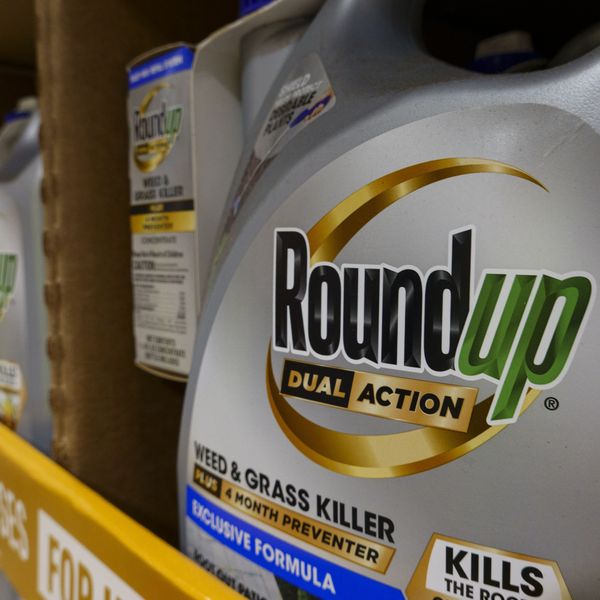Paradise Lost on Maldives' Rubbish Island
It may be known as a tropical paradise, an archipelago of 1,200 coral islands in the Indian Ocean. But the traditional image of the Maldives hides a dirty secret: the world's biggest rubbish island.
A few miles and a short boat ride from the Maldivian capital, Male, Thilafushi began life as a reclamation project in 1992. The artificial island was built to solve Male's refuse problem. But today, with more than 10,000 tourists a week in the Maldives adding their waste, the rubbish island now covers 50 hectares (124 acres).
It may be known as a tropical paradise, an archipelago of 1,200 coral islands in the Indian Ocean. But the traditional image of the Maldives hides a dirty secret: the world's biggest rubbish island.
A few miles and a short boat ride from the Maldivian capital, Male, Thilafushi began life as a reclamation project in 1992. The artificial island was built to solve Male's refuse problem. But today, with more than 10,000 tourists a week in the Maldives adding their waste, the rubbish island now covers 50 hectares (124 acres).
So much is being deposited that the island is growing at a square metre a day. There are more than three dozen factories, a mosque and homes for 150 Bangladeshi migrants who sift through the mounds of refuse beneath palm-fringed streets.
Environmentalists say that more than 330 tonnes of rubbish is brought to Thilafushi a day. Most of it comes from Male, which is one of the world's most densely populated towns: 100,000 people cram into 2 square kilometres.
Brought on ships, the rubbish is taken onshore and sifted by hand. Some of the waste is incinerated but most is buried in landfill sites. There is, say environmental campaigners, also an alarming rise in batteries and electronic waste being dumped in Thilafushi's lagoon.
"We are seeing used batteries, asbestos, lead and other potentially hazardous waste mixed with the municipal solid wastes being put into the water. Although it is a small fraction of the total, these wastes are a source of toxic heavy metals and it is an increasingly serious ecological and health problem in the Maldives," said Ali Rilwan, an environmentalist in Male.
Despite the growing crisis, Thilafushi remains largely hidden from view. Nobody goes there apart from workers.
Meanwhile, tourism has made the Maldives the richest country in South Asia in terms of GDP a head - which is around $4,500 (PS3,100) - though that wealth is thinly spread.
However, almost everything has to be imported. Most tourists can only be catered for by bringing in thousands of tonnes of meat, vegetables and diesel oil every year.
All this produces what many say is an unsustainable amount of waste. Every tourist produces 3.5kg of rubbish and requires 500 litres of water a day.
The lack of space means the Maldives is now "exporting junk" to India. "Before, the ships that brought our vegetables from south India used to return empty, but now we are sending them crushed cans, metals, cardboard. They then sort them out and get cash for them," said Rilwan.
Environment issues are a major political issue in the Maldives, not least because its 300,000 people face being the first to be submerged under rising sea levels caused by global warming.
Earlier this month the new president, Mohamed Nasheed, told the Guardian of his radical solution to save his people: put aside some of the Maldives' tourism revenues to buy another homeland.
An Urgent Message From Our Co-Founder
Dear Common Dreams reader, The U.S. is on a fast track to authoritarianism like nothing I've ever seen. Meanwhile, corporate news outlets are utterly capitulating to Trump, twisting their coverage to avoid drawing his ire while lining up to stuff cash in his pockets. That's why I believe that Common Dreams is doing the best and most consequential reporting that we've ever done. Our small but mighty team is a progressive reporting powerhouse, covering the news every day that the corporate media never will. Our mission has always been simple: To inform. To inspire. And to ignite change for the common good. Now here's the key piece that I want all our readers to understand: None of this would be possible without your financial support. That's not just some fundraising cliche. It's the absolute and literal truth. We don't accept corporate advertising and never will. We don't have a paywall because we don't think people should be blocked from critical news based on their ability to pay. Everything we do is funded by the donations of readers like you. Will you donate now to help power the nonprofit, independent reporting of Common Dreams? Thank you for being a vital member of our community. Together, we can keep independent journalism alive when it’s needed most. - Craig Brown, Co-founder |
It may be known as a tropical paradise, an archipelago of 1,200 coral islands in the Indian Ocean. But the traditional image of the Maldives hides a dirty secret: the world's biggest rubbish island.
A few miles and a short boat ride from the Maldivian capital, Male, Thilafushi began life as a reclamation project in 1992. The artificial island was built to solve Male's refuse problem. But today, with more than 10,000 tourists a week in the Maldives adding their waste, the rubbish island now covers 50 hectares (124 acres).
So much is being deposited that the island is growing at a square metre a day. There are more than three dozen factories, a mosque and homes for 150 Bangladeshi migrants who sift through the mounds of refuse beneath palm-fringed streets.
Environmentalists say that more than 330 tonnes of rubbish is brought to Thilafushi a day. Most of it comes from Male, which is one of the world's most densely populated towns: 100,000 people cram into 2 square kilometres.
Brought on ships, the rubbish is taken onshore and sifted by hand. Some of the waste is incinerated but most is buried in landfill sites. There is, say environmental campaigners, also an alarming rise in batteries and electronic waste being dumped in Thilafushi's lagoon.
"We are seeing used batteries, asbestos, lead and other potentially hazardous waste mixed with the municipal solid wastes being put into the water. Although it is a small fraction of the total, these wastes are a source of toxic heavy metals and it is an increasingly serious ecological and health problem in the Maldives," said Ali Rilwan, an environmentalist in Male.
Despite the growing crisis, Thilafushi remains largely hidden from view. Nobody goes there apart from workers.
Meanwhile, tourism has made the Maldives the richest country in South Asia in terms of GDP a head - which is around $4,500 (PS3,100) - though that wealth is thinly spread.
However, almost everything has to be imported. Most tourists can only be catered for by bringing in thousands of tonnes of meat, vegetables and diesel oil every year.
All this produces what many say is an unsustainable amount of waste. Every tourist produces 3.5kg of rubbish and requires 500 litres of water a day.
The lack of space means the Maldives is now "exporting junk" to India. "Before, the ships that brought our vegetables from south India used to return empty, but now we are sending them crushed cans, metals, cardboard. They then sort them out and get cash for them," said Rilwan.
Environment issues are a major political issue in the Maldives, not least because its 300,000 people face being the first to be submerged under rising sea levels caused by global warming.
Earlier this month the new president, Mohamed Nasheed, told the Guardian of his radical solution to save his people: put aside some of the Maldives' tourism revenues to buy another homeland.
It may be known as a tropical paradise, an archipelago of 1,200 coral islands in the Indian Ocean. But the traditional image of the Maldives hides a dirty secret: the world's biggest rubbish island.
A few miles and a short boat ride from the Maldivian capital, Male, Thilafushi began life as a reclamation project in 1992. The artificial island was built to solve Male's refuse problem. But today, with more than 10,000 tourists a week in the Maldives adding their waste, the rubbish island now covers 50 hectares (124 acres).
So much is being deposited that the island is growing at a square metre a day. There are more than three dozen factories, a mosque and homes for 150 Bangladeshi migrants who sift through the mounds of refuse beneath palm-fringed streets.
Environmentalists say that more than 330 tonnes of rubbish is brought to Thilafushi a day. Most of it comes from Male, which is one of the world's most densely populated towns: 100,000 people cram into 2 square kilometres.
Brought on ships, the rubbish is taken onshore and sifted by hand. Some of the waste is incinerated but most is buried in landfill sites. There is, say environmental campaigners, also an alarming rise in batteries and electronic waste being dumped in Thilafushi's lagoon.
"We are seeing used batteries, asbestos, lead and other potentially hazardous waste mixed with the municipal solid wastes being put into the water. Although it is a small fraction of the total, these wastes are a source of toxic heavy metals and it is an increasingly serious ecological and health problem in the Maldives," said Ali Rilwan, an environmentalist in Male.
Despite the growing crisis, Thilafushi remains largely hidden from view. Nobody goes there apart from workers.
Meanwhile, tourism has made the Maldives the richest country in South Asia in terms of GDP a head - which is around $4,500 (PS3,100) - though that wealth is thinly spread.
However, almost everything has to be imported. Most tourists can only be catered for by bringing in thousands of tonnes of meat, vegetables and diesel oil every year.
All this produces what many say is an unsustainable amount of waste. Every tourist produces 3.5kg of rubbish and requires 500 litres of water a day.
The lack of space means the Maldives is now "exporting junk" to India. "Before, the ships that brought our vegetables from south India used to return empty, but now we are sending them crushed cans, metals, cardboard. They then sort them out and get cash for them," said Rilwan.
Environment issues are a major political issue in the Maldives, not least because its 300,000 people face being the first to be submerged under rising sea levels caused by global warming.
Earlier this month the new president, Mohamed Nasheed, told the Guardian of his radical solution to save his people: put aside some of the Maldives' tourism revenues to buy another homeland.

